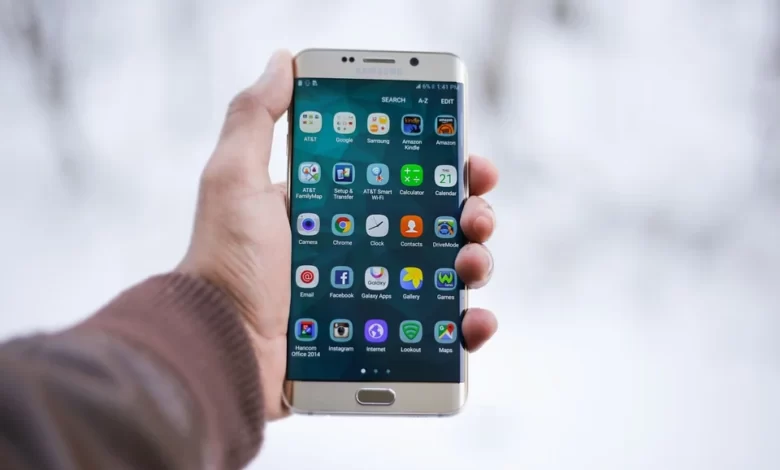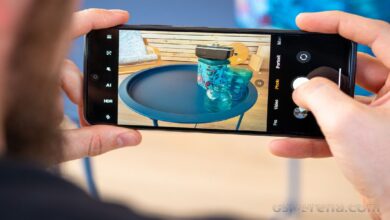
The range of modern phones continues to amaze with its diversity. The market offers many smartphones of different brands, appearances, and functionality. And this offer is growing every day. So we’ll consider how not to drown in the sea of various devices and choose the one that suits you the best in the given article.
Operating System
Perhaps in conversations about the choice of smartphone, most often argue about the operating systems. Followers of Android and iOS have been vainly proving to each other for years which of these operating systems is better. The pros of Android should include the greater freedom and flexibility of customization compared to iOS.
But this advantage is very relative: the average user often wants a convenient system out of the box without presets. Now about the pros of iOS smartphones. All iPhones are guaranteed to receive regular system updates for several years after release. All this time, Apple promptly fixes software problems and adds new features. As for Android devices, most of them are updated with a long delay or do not receive updates at all.
As a result, software flaws in these gadgets remain unnoticed. Thus, before buying any Android smartphone, go to the manufacturer’s website and check what version of the OS you can upgrade it to. The fresher the latest version available to it, the better. In the case of iPhones, there may be problems with updates only for older devices.
Nevertheless, if you face problems with your iPhone, it’s better to turn to professionals immediately. The best solution is to go to the Howly service providing online consultations on any technical issues. For example, if you need an Apple iPhone set up or help to reset your Apple ID password, you can safely apply these and any other questions on Apple technology to Howly experts.
Dimensions and a Screen Diagonal
First, you don’t have to pay attention to the smartphone’s weight. The difference, as a rule, is no more than 20-40 g, and it doesn’t affect comfort in any way. The gadget’s thickness also doesn’t matter. For most devices, this parameter has long been no more than half-inch. As for the display’s size, it all depends on your preferences.
Most users can comfortably use one hand screen if its diagonal length doesn’t reach six inches. But for video viewing and web surfing, such a display may be too small. Taking a larger device won’t be as comfortable to hold, but the screen can display more information. So now, more and more often produce smartphones with minimal or no bezel around the display.
Obviously, of the two devices with the same screen size, the one with a smaller frame is more comfortable. Don’t forget that. So if you want to choose the best model for yourself, hold the smartphone in your hands before buying it. Then you’ll know for sure if it’s the right size for you.
Matrix Display
People spend several hours a day with a smartphone, and most of that time, they look at the screen. The display is a critical element that determines the comfort level when working with a mobile device; therefore, it must be good. It largely depends on the matrix type and the display’s technological basis. In some budgetary models can be found TN-matrix, which is characterized by poor image quality, as well as small viewing angles.
However, this outdated technology was replaced by the more advanced IPS and OLED. IPS matrices are devoid of TN cons and can boast excellent color reproduction, high contrast, and viewing angles of up to 178°. As an alternative to IPS, you can consider OLED screens (AMOLED, Super AMOLED), also known as organic LED displays.
Each pixel in them is a light source, eliminating the need for additional backlighting. Thus, OLED displays are excellent in black fidelity, have high contrast and brightness, are energy efficient, and have large viewing angles. Make a direct comparison if you can’t decide between IPS and OLED. Take two smartphones in your hands, watch the same video and a few pictures, and everything will become apparent to you at once.
Screen Resolution
The resolution of the display is the number of pixels it consists of. And it is this characteristic that allows you to scam some people for money. Manufacturers are constantly increasing this parameter just to indicate it in the specifications of the phone. But it has long been not very sensible for operation.
You can see the difference between 2K and 4K resolution if you bring the display close to your eyes. In addition, the 4K screen will consume battery power faster. So it is not worth overpaying for such high clarity. Choose a device with a resolution from Full HD (1,080 × 1,920) to 2K (1,080 x 2,340). This range is optimal.
Cameras
The situation with cameras is almost the same as with display resolution: the number of megapixels is not an indicator of quality. A good camera combines hardware and software components, fine-tuned and properly configured. That is why two smartphones with the same sensor shoot differently. Unfortunately, it’s impossible to predict the behavior of a camera based on its characteristics.
If you want to know how fantastic and high-quality photos and videos a particular smartphone can take, then look online for tests of its camera with examples of footage. Also, when choosing a smartphone, don’t forget the type and number of cameras. And it’s not just about the front and main photo modules, which everyone got used to a long time ago. Recently, smartphones have been increasingly equipped with four or even five cameras designed for different types of shooting.
RAM
Devices with 2 GB RAM can be slow when running many applications. And the volume of more than 4 GB is required only for the most demanding games. So 3-4 GB will be enough if you are not interested in them. But Android smartphone manufacturers are increasingly exceeding this capacity, forcing users to pay for extra gigabytes.
Conclusion
Knowing what criteria are essential to follow before choosing a good smartphone makes this task not as challenging as before. The main thing is to understand for what purposes you need the gadget. And also, here it’s worth remembering the words of Steve Jobs, who said that it’s better to invent tomorrow than to worry that yesterday was not so good. So, adopt this advice and choose the perfect gadget to help you step into the future just now.
Author: Christine Tomas

Christine Tomas is a tech expert, consultant, and aspiring writer. She writes for different news portals and thematic blogs that helps her stay at the heart of the programming and technology news.
Such work gives her the opportunity to write articles on the most relevant topics today.



